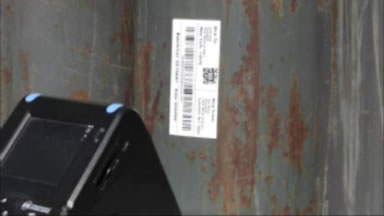I one my last post (what is BizTalk 2010 RFID) I introduced the BizTalk RFID platform, now I would make some important other considerations about it because is very important to consider all the factors in order to design a good RFID solution.
The Microsoft BizTalk RFID infrastructure enables compliance, automation, and business process transformation while shielding users from changing standards and regulations. Microsoft BizTalk RFID is a core infrastructure components to support RFID applications and solutions. It is also RFID-enabling select systems within its family of Microsoft enterprise applications products. The infrastructure provides a base set of tools for device abstraction and management, event processing, and applications integration.
I think that exist many challenges to face and many considerations to creating and working with RFID , multiple goals of an RFID deployment can lead to a complex project. It’s better to focus on a few clear objectives.
Before to start there are many considerations, the most important are:
Today’s RFID systems are customized for each deployment. A successful implementation typically requires considerable experimentation to achieve adequate read rates and the delivery of actionable information to appropriate recipients.
The physical properties of the products to be tagged, the antenna design, and other environmental factors can make it difficult for readers to work reliably. For example metal reflects frequency (RF) signals and liquids absorb radio. 
External factors like RF noise from nearby electric motors can also impact performance because performance can be affected by the item on which the tag is attached. Example a tag placed on a corrugated case holding steel cans of green beans will be easier to read if the tag can be positioned between cans rather than at the point where the can touches the corrugated container.
However, as RFID technology matures and experience increases, tag and reader placement will become less an art and more of a science.
Interest research here http://rfid.net/news/440-rfid-labels-that-work-on-metal-a-liquids
Lack of integration and isolated islands of automation can pose other problems for those considering RFID. Manufacturers’ enterprise resource planning systems may not be linked in real time to shop floor systems. Currently, integration with back-end systems generally requires creation of custom interfaces, an often time-consuming and expensive undertaking. 
Managing multiple readers and related hardware can be a challenge, especially across multiple facilities. That’s because global standards governing how RFID devices communicate with higher level systems are evolving. At present, communication between hardware and software requires custom configuration. The situation is similar to that found in the early days of personal computing when a specific vendor driver was required to link a printer to a PC and print documents. For those moving forward with RFID deployments, the fluid standards situation makes it imperative that system components provide an easy, inexpensive upgrade path.
An RFID reader will continuously scan each tag several times per second as long as it remains in its read range, so the potential for data overload must also be considered. Some readers can be programmed to eliminate duplicate information, but data volume still can be overwhelming to the network. The reason: RFID systems can capture information at more points than was practical with manual or bar code systems.
Because few ERP systems were originally built to accept a high volume of low level data, RFID system designers typically include some data filtering at the edge (device level). This approach leaves middleware to refine and augment data to the point where it is usable by enterprise systems.
The torrent of RFID data can overwhelm readers or cause ambiguity, especially in dense reader environments where scanning areas may overlap. Read rates are improving but often not anywhere near 100 percent due to unreadable, damaged or missing tags. In addition, because reading is based on proximity, mistakes can happen. A reader, for example, may read the tag on an item passing by on a forklift rather than on a stationary target. To prevent inaccurate data from being transmitted to enterprise applications, a successful RFID solution must be able to deal with erroneous or missing information.
Most RFID systems must be assembled from multiple sources. This can create integration obstacles if hardware and software doesn’t work together.

In systems that depend on information from various trading partners, information sharing issues must be resolved to achieve maximum benefit.
Many people and advocates claim RFID will violate consumer privacy and have become vocal opponents of the technology. Although much of what they fear isn’t currently practical these critics are being heard.
Of particular concern is the use of RFID technology without advising the consumer of its presence and how it is being used.
Vendors and users of RFID should be committed to using the technology responsibly and vigilant about any perceived or actual misuse of personal data.

Many realities today rely heavily on manual processes or bar code scanning to track goods. In any organization, moving from the familiar to new technology poses a challenge, especially when it requires process change.
In many manufacturing facilities and distribution centers, bar code systems have been used for many years. Since bar code systems are efficient and represent a substantial investment, it can be difficult to justify a change to RFID.
Nevertheless, pressure to move to a more automated supply chain solution is being exerted by retailers such hypermart, military, which are mandating that their suppliers use RFID. Most such mandates recognize that switching to RFID takes time, so they allow suppliers to take a phased approach. This results in many suppliers moving forward just enough to tag only a small portion of their products. While a more complete implementation of RFID would likely generate a higher return on their investment, limited rollouts make it difficult for these suppliers to justify the higher process re-engineering expense.
RFID-knowledgeable IT personnel are hard to find. Many organizations, regardless of size, will discover they have no qualified IT personnel in certain locations.
I think that all of these considerations could be a good check list before to start designing a BizTalk RFID solution.



